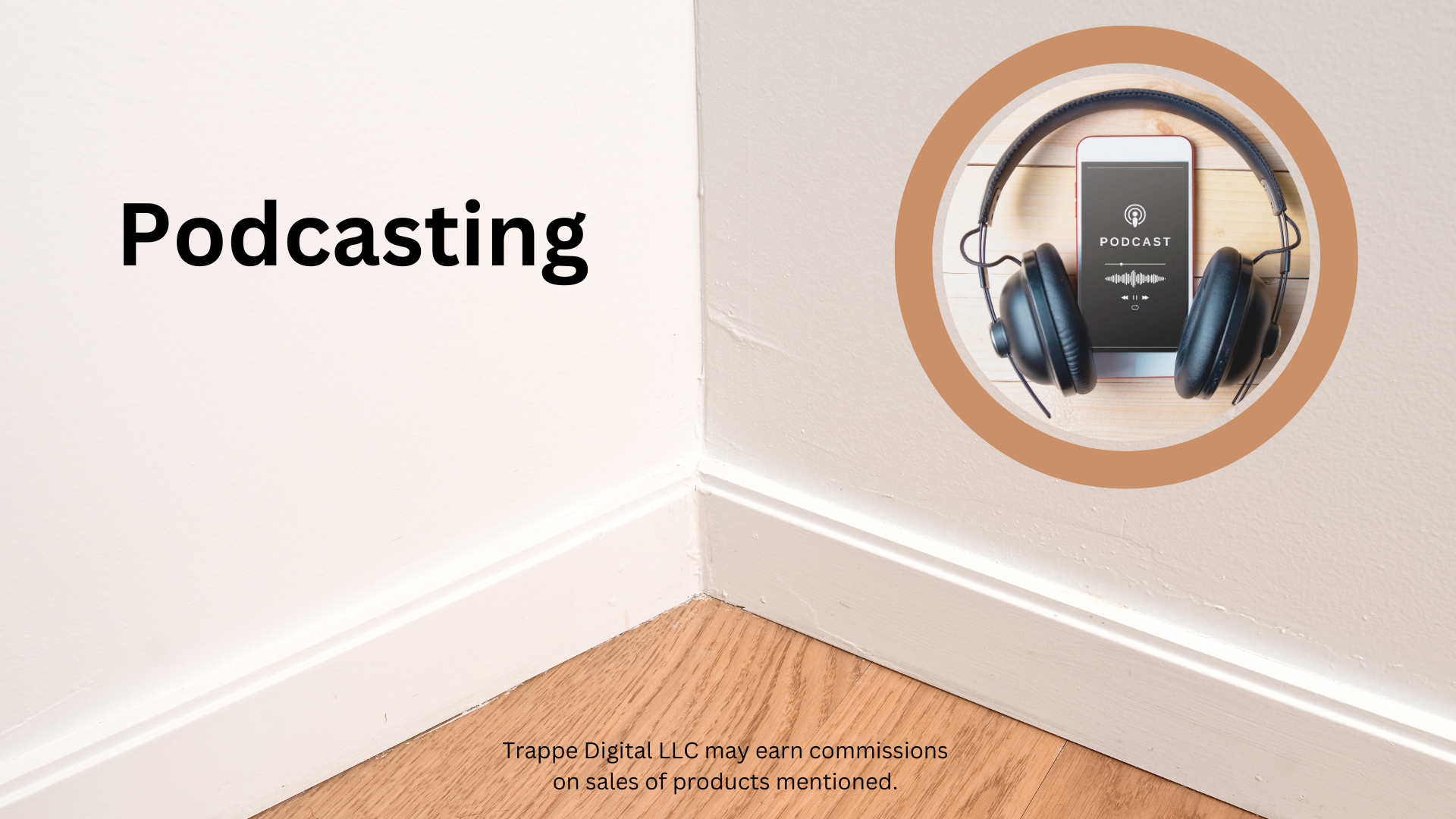Trappe Digital LLC may earn commissions from sponsored links and content. When you click and buy you also support us.
I’m a fan of getting the most out of my content through the most channels but publishing my podcast on television?  Is that a thing? Do people watch podcasts on television?
Is that a thing? Do people watch podcasts on television?
When I first started with the strategy, I didn’t know. But now I know that people watch podcasts – talk shows – on television. It’s no different from when radio shows like “Mike and Mike” started broadcasting on ESPN. Some people were probably questioning that too. And those shows ended up being super successful.
Technically, you could already watch my podcast on YouTube streaming to a TV set. That’s been available for a while. But how about a TV network?
Read next: How YouTube owned my “TV prime time”
I think it’s worth exploring, and I guess that more publishers, agencies, and others will start networks – similarly to what David Brunner has done with the DB&A Television network.
 David’s network streams to Roku, Amazon, and online. He put together a seasonal schedule that shows different episodes every day. Just like a television network would.
David’s network streams to Roku, Amazon, and online. He put together a seasonal schedule that shows different episodes every day. Just like a television network would.
My podcast – The Business Storytelling Show – broadcasts episodes every morning – including on the weekends. Once I livestream them, I upload them and David’s team would add them to the rotation.
“During the pandemic, I needed to do something different to keep my clients relevant,” David said. “I decided to start my own 24/7 Streaming Television Network to highlight and showcase my clients on a national and international platform. I am very proud to have the first and only TV Network owned and run by a Media Talent Agency.”
Author Charlene Walters hosts “Launch with Charlene Walters” every day.
“I joined DB&A TV because I thought it was a good opportunity to share valuable content that would help entrepreneurs and business professionals out there through lively discussions, broaden my audience, and connect with people in other places where they are likely to consume content,” said Charlene. “It was the next logical step for me, and I am looking forward to the new opportunities that arise from it. I also thought DB would be great to work with. I was right. And it’s been fun getting to know the rest of the team at DB & A TV.”
Advantages of broadcasting your podcast on television
You can submit your own Roku channel, but it’s quite technical. It reminds me of when Alexa first came around. Creating an Alexa skill was quite a challenging task. Even for your podcast. Today, you can distribute your podcast to Alexa through Amazon Music and Siri through Apple Podcasts.
There’s also marketing value. I updated my opening to mention the network, for example.
Read next: Using a livestream countdown timer
On-demand podcasts on TV
While there is a daily schedule for appointment viewing, the shows are also available on-demand on Roku.
That’s great and gives the show additional reach. There’s also an advantage to seeing the most popular episodes. I was pleasantly surprised to see that one of my episodes was one of the most popular.

Added promotion
The television network likely will also promote your show further. For example, the DB&A network routinely creates clips for social media and other promotional campaigns.
Things to consider
The most significant change in my process has been the time limit that shows on TV have to deal with. The shows on the network are either 24 minutes or 54 minutes. So that means I can’t submit a 38-minute episode, which was my previous average.
So my options were to either edit a show down or cut it to 26 minutes and make sure that my guests knew about the time limit. It takes a little bit of getting used to and sometimes can feel slightly rushed.
If I have five questions, I have just five minutes per question. When you have a good conversation, that’s not very much.
But I also want to be efficient with my content. So, the 26-minute time limit can be a good container to stick to. After doing 100 of my 500 total episodes this way, I would say the experience has been positive. The time limit actually helps. It keeps the conversation on track.
Read next: How to connect AirPods to my TV
There are also other strategies you can utilize. For example, for my 400th podcast episode, I had a bunch of clips from previous guests. Way too many to fit into a 27-minute show. So I just cut the livestream and TV version to 27 minutes.
On the podcast version, I added the guests I couldn’t fit on the live stream.

As you can see here, the podcast episode had another 10 minutes of content compared to the TV show.
I would think that most podcasters are interested in growing and expanding their shows and this helps. It’s also another example of why producing podcasts in video format is essential.

